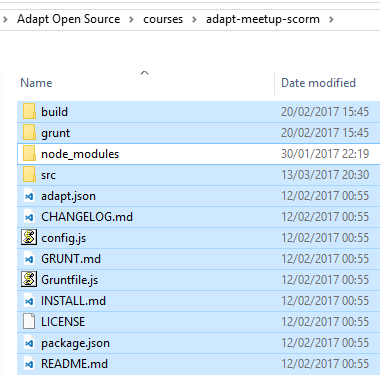I have installed the authoring tool (using developer’s installation server). I can work with the authoring tool, creating courses, download or export them.
I am wondering how to work with the framework? I can download a course and view the output, I hope this downloaded package is not the one that can be used if i need to do any custom work. I hope that the exported version is the one needs to be used for customization.
So, I have exported a course from the authoring tool, unzipped the folder and run the course after the following steps are done.
- npm install
- grunt build
- grunt server
Now, there are two course copies in the unzipped folder. One from build/course and another is src/course. If i need to customize the course (for example adding/editing the look and feel of the component/theme updates) using this exported version, how/which folder should I need to do this in the exported package? Is this the right way to customize the course? Please suggest. Thanks.
